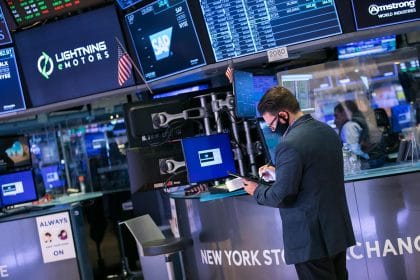The current gains in the Nasdaq may help the index snap off the 2% loss it has accumulated thus far in May.
The United States stock market has shown impressive upticks as the economy reopening has marked new promises for firms across the board. The Dow Jones Industrial Average (INDEXDJX: .DJI) grew 0.54%, adding 186.14 points to 34,393.98. The S&P 500 (INDEXSP: .INX) added 41.19 points atop a 0.99% growth to 4,197.05. The gains are demonstrated by the tech-heavy Nasdaq Composite (INDEXNASDAQ: .IXIC) that rode on the back of tech stocks to close Monday’s session with 190.18 points, following a 1.41% upsurge to 13,661.17.
The top stocks poised to benefit directly from the reopening economy including airlines, travels, hotels, and online lodging business or marketplace surged on Monday. Delta Air Lines, Inc (NYSE: DAL) grew 2.12% to $46.17, United Airlines Holdings Inc (NASDAQ: UAL) closed Monday’s session at $56.14 after surging 1.52%. Airbnb Inc (NASDAQ: ABNB) recorded a 0.89% growth to $135.91 per share.
“We continue to see incremental data points that strengthen our view that when equities break out of this range, the next move is a substantial rise higher,” wrote Tom Lee, head of research at Fundstrat Global Advisors. Lee cited data showing a collapse in COVID-19 cases.
The dividends of the US COVID-19 vaccination program is just showing forth as the number of cases and death have reduced drastically. The ensuing impact is that businesses can return to operational levels pre-pandemic. This has further buoyed the stock indices for a positive close in May as Monday marked the last complete trading week for the month. The S&P 500 is up 0.4% thus far this month, the Dow Jones is also poised to close the month with gains. The current gains in the Nasdaq may however help the index snap off the 2% loss it has accumulated thus far in May.
“We think the choppy/sideways trend will continue for a bit longer, and the market will experience sell-off scares along the way,” noted Adam Crisafulli, founder of Vital Knowledge. “While stocks are absorbing a lot of changes well so far, all the inflection points still have longer to play out.”
The Cryptocurrency Market Also Gets Rejuvenated
The global crypto industry was on a downtrend last week as different negative news toppled one another, sending the bears selling off. To begin with, Tesla Inc (NASDAQ: TSLA) revealed it will stop accepting Bitcoin (BTC) payments for its products, against its earlier stance backing the digital currency. This move placed the energy consumption concerns of BTC and the cryptocurrency ecosystem at large to the fore.
China then wielded the big stick by banning crypto-related activities amongst financial institutions. This move was also succeeded with a projected clampdown on miners. These events pushed the global crypto market cap from over $2.4 trillion to $1.4 trillion, with the losses being majorly suffered by the premier digital currency and Ethereum (ETH).
The market opened to a new upsurge fueled by Elon Musk’s meeting with North American crypto miners to consider green alternatives in Bitcoin mining. The market appears to have been rejuvenated at the time of writing with BTC trading at $37,389.84, up 2.50% in the past 24 hours according to CoinMarketCap.
next